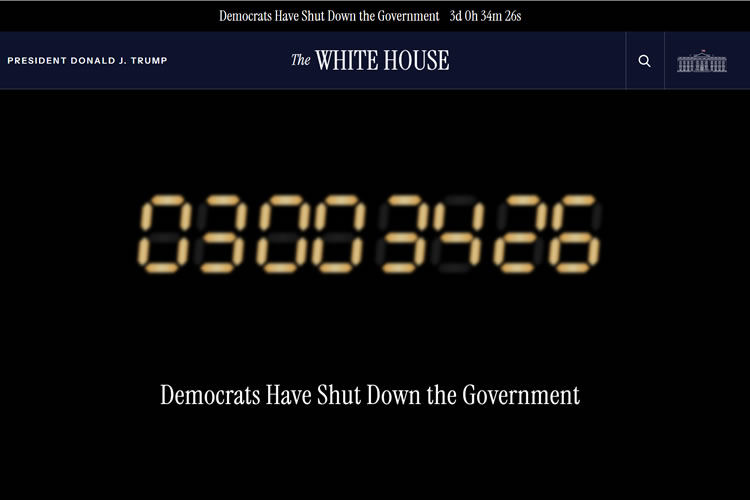As Washington again finds itself mired in a government shutdown, the public debate has been filled with familiar soundbites. Democrats blame Republicans for refusing to compromise; Republicans argue Democrats are holding the government hostage over policy demands unrelated to simply keeping the lights on. Much of the media framing has centered on conservative proposals to limit health care spending for undocumented immigrants. But the actual dollars at stake — the real driver behind this particular standoff — come from a far less discussed issue: the future of the Affordable Care Act’s (ACA) enhanced subsidies.
What the Shutdown Covers — and What It Doesn’t
Shutdowns are often presented as existential crises, but the mechanics are more mundane. “Essential” government functions continue: Social Security checks go out, Medicare and Medicaid claims are processed, and core federal operations like the military remain funded. The disruption falls on “non-essential” services, such as national parks, some administrative agencies, and assistance programs that rely on annual appropriations like SNAP or WIC. Federal workers deemed non-essential are furloughed but typically receive back pay later, making shutdowns expensive rather than thrifty.
What has triggered this fight isn’t baseline funding for Medicare or Medicaid, or even the normal ACA subsidy program. The real issue is whether to continue a COVID-era expansion of ACA subsidies — a program originally justified as emergency relief, but which Democrats now want to make permanent.
The COVID-Era Subsidy Boost
In 2021, the American Rescue Plan Act expanded ACA premium subsidies to make coverage more affordable. It eliminated the income cap that cut off assistance for middle-class households and made subsidies more generous for those already eligible. At the time, the policy was explicitly described as temporary, designed to cushion households during the economic disruption of the pandemic.
That “emergency” expansion carried a real price tag: roughly $20 to $25 billion in additional costs per year above the ACA’s baseline. Over the four years since 2021, taxpayers have covered about $80 to $100 billion in extra spending on these subsidies alone.
Instead of expiring when the pandemic eased, the subsidy expansion was extended in 2022 through the Inflation Reduction Act, which carried it forward through 2025. By Washington standards, what was billed as a short-term fix has now lasted half a decade.
What Happens Next
The current standoff comes because those enhanced subsidies are again set to expire at the end of this year. Republicans have put forward a continuing resolution (CR) that would keep the government funded at current levels into November but exclude any extension of the enhanced subsidies. Democrats have blocked that CR in the Senate, insisting that any funding bill must include a continuation of the ACA boost.
The numbers explain why this is a line in the sand. According to Congressional Budget Office (CBO) estimates, making the enhanced subsidies permanent would cost roughly $335 to $380 billion over the next decade — about $35 billion per year. That’s one-third of a trillion dollars added to the federal deficit over ten years, on top of the $100 billion already spent since 2021. Republicans argue that COVID is over, the emergency rationale is gone, and the country simply cannot afford another open-ended entitlement expansion when Medicare and Medicaid themselves are already on unsustainable growth paths.
Democrats counter that allowing the subsidies to expire would result in higher premiums for millions of households, destabilize the health insurance markets, and amount to a de facto cut in health care access. In their view, the subsidies are no longer an emergency patch but a necessary protection for working families.
🍁 Make a One-Time Contribution — Stand Up for Accountability in Vermont 🍁
What the Fight Is — and What It Isn’t
The talking points dominating cable news focus on whether government money indirectly supports health care for undocumented immigrants. Emergency Medicaid obligations exist, and hospitals must treat anyone in need of stabilization. But compared to the scale of the ACA subsidy expansion, those costs are minimal. The real fiscal fight here isn’t about “backdoor funding for illegal aliens.” It’s about whether the U.S. government should commit to spending an additional $350 billion over the next decade to make permanent a subsidy expansion that was supposed to be temporary.
Framed that way, the shutdown is less about day-to-day government services than about long-term budget math. Republicans see the subsidy fight as the line where emergency spending must finally be allowed to sunset. Democrats see it as a chance to lock in a popular benefit before it disappears, even if it means using a shutdown as leverage.
The Bottom Line
Shutdowns always come with finger-pointing, wasted costs, and disruption for federal workers and agencies. But the heart of this one isn’t the routine funding bills — it’s a clash over a temporary COVID-era program that has already cost around $100 billion and could add another $350 billion if made permanent. That’s the real “big ticket item” driving the standoff, even if it’s not the headline soundbite.
In Washington, nothing is more permanent than a temporary program. The enhanced ACA subsidies are shaping up to be the latest example. Whether they expire or become a new fixture of the federal budget will say a lot about whether Congress can ever let emergency spending truly end.
Dave Soulia | FYIVT
You can find FYIVT on YouTube | X(Twitter) | Facebook | Instagram
#fyivt #governmentshutdown #aca #spending
Support Us for as Little as $5 – Get In The Fight!!
Make a Big Impact with $25/month—Become a Premium Supporter!
Join the Top Tier of Supporters with $50/month—Become a SUPER Supporter!









Leave a Reply to Robert FireovidCancel reply